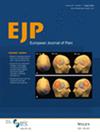Experimental Pain Model Based on Short-Wave Diathermy Replicates the Intensity, Quality and Spatial Distribution of Chronic Shoulder Pain: A Parallel Group Validation Study
Abstract
Background
Several experimental pain models have been developed to better understand shoulder pain. However, most of these models do not accurately replicate characteristic features of clinical pain. The aim of this study was to assess whether the effects of the short-wave diathermy (SWD) pain model mimic clinical shoulder pain in terms of intensity, quality, and spatial distribution.
Methods
Thirty-two patients with unilateral shoulder pain (USP) and thirty-two healthy volunteers participated in a single experimental session. SWD was applied to the dominant shoulder of healthy volunteers, until volunteers reached the tolerance threshold for painful heat stimulation. Pressure pain thresholds (PPTs), pain intensity (using a visual analogue scale, VAS), pain quality (using the McGill Pain Questionnaire) and spatial pain distribution were assessed 30 min after SWD application on the infraspinatus muscle. The same assessments were performed in the USP group. Outcomes were contrasted using linear mixed models and independent sample t tests, and statistical equivalence was assessed using the TOST (two one-sided t tests) procedure.
Results
PPTs on the painful side were statistically equivalent within a range of ±50 kPa. Pain intensities in both groups were statistically equivalent within a range of ±2 VAS points. Both groups showed a similar spatial pain distribution, and described the pain as continuous, well-delimited, dull and bearable. However, USP patients more frequently used the stabbing and nagging descriptors in contrast to volunteers in the SWD group, who chose hot and heavy instead.
Conclusion
Experimental pain induced by SWD accurately reproduces many relevant characteristics of chronic shoulder pain.
Significance Statement
Short-wave diathermy applied to the shoulder of healthy volunteers elicited equivalent pain intensity, quality and spatial distribution compared with clinical unilateral shoulder pain.


 求助内容:
求助内容: 应助结果提醒方式:
应助结果提醒方式:


